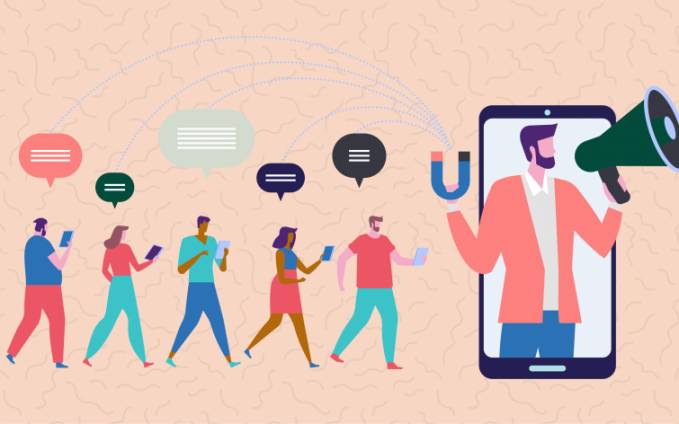Influencer marketing is no longer a niche tactic. It’s now a mainstream marketing strategy. And it’s one that helps at each stage of the customer journey.
That’s one of the reasons why brands spend a significant amount of money on influencer marketing.
The size of the influencer marketing industry is estimated to be $16.4 billion, and 68% of marketers are planning to spend even more on influencer marketing next year.
It’s clear that promotions via influencers or creators are an effective marketing tactic that’s only gaining in popularity.
In this post, we’ll walk you through the various stages of the customer journey including how you can use influencer marketing at each stage.
Let’s get started!
Table of Contents
What are the Stages of the Customer Journey?
A customer journey map is a diagram that shows the various stages through which a consumer travels before making a purchase.
It’s in every business’ best interest to create a customer journey map and understand the unique qualities of each stage.
Once you’ve mapped out your customer’s journey, then you can effectively engage your customers at each stage using the right tactics like influencer marketing.
Let’s briefly cover the stages of a typical customer journey.
Stage 1: Awareness
At the awareness stage, a prospective customer first learns about your brand and products.
Awareness can come in the form of an influencer mention, product placement or dedicated content.
Stage 2: Consideration
At the consideration stage, your prospect knows of your products and they’re actively searching for more information.
They’re likely looking for details about product features, benefits, use cases, and other unique selling points.
At this stage, your prospects often compare your product to your competition and decide whether yours is truly the best option for them.
Stage 3: Purchase
This is the stage where the consumer has decided to buy your product.
They may buy immediately or they may need a gentle nudge before they make their first purchase. One of the best ways to accelerate their decision is to provide social proof that your products are trusted and used by their favorite influencers who they know, like, and trust.
Stage 4: Loyalty
A customer’s journey doesn’t end after they make their first purchase. Smart brands focus more on customer retention than customer acquisition because they know their customer’s potential lifetime value.
If you engage your existing customers with impactful influencer content, it keeps your brand top of mind and keeps them coming back for more.
With the right influencer marketing strategy, you can strengthen your customer relationships and increase your customer lifetime value.
How to Use Influencer Marketing at Various Stages of Customer Journey
Now that you understand the four general stages of a customer’s journey, let’s see how influencer marketing can help at each stage.
In this section, we’ll take you through goals and strategies for each stage of the customer journey as they relate to influencer marketing.
Here we go!
Use Influencers at Stage 1 to Create Awareness
At this stage, your goals are to:
- Reach your target audience
- Introduce your brand and products
- Educate your prospects
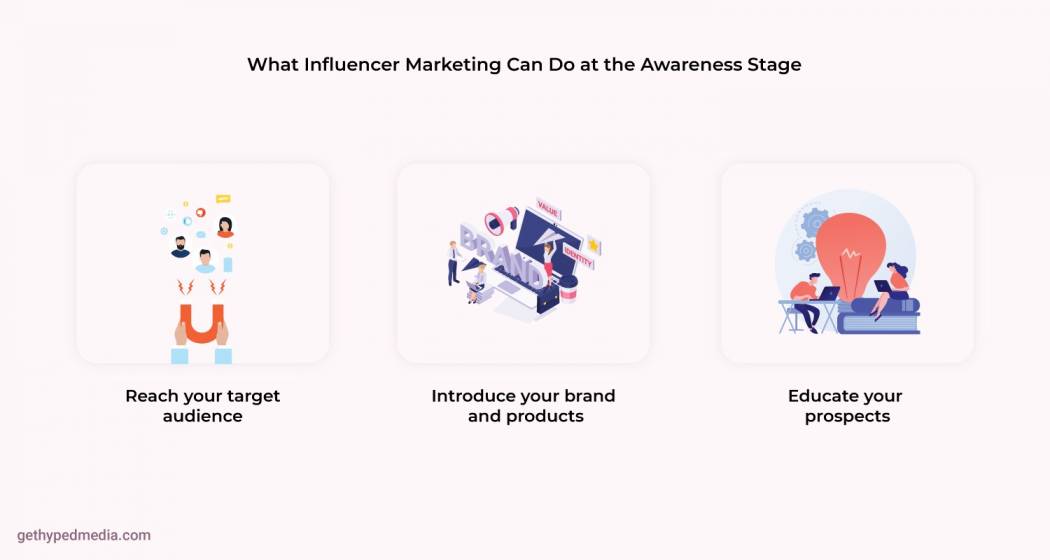
Basically, put your brand’s products on the map using influencer marketing. While new brands focus on spreading brand awareness, established brands strengthen their brand image at this stage of the customer journey map.
Which influencer marketing strategies can you use at this stage of the customer journey?
Here are a few tactics that are effective at the awareness stage:
- Send free products to influencers in hopes that they will try, like, and organically post about your products, a tactic referred to as seeding.
- Partner with influencers to create sponsored social media posts mentioning your brand or products.
- Repurpose influencer-generated content as social media ads to reach your target audience across various social media platforms.
- Use a variety of content types together like Reels, Stories, Posts, etc. to ensure you reach as much of your target audience as possible.
Here’s an example of some great stage one content: an unboxing video by a YouTube influencer that got over 1.9 million views.

Image via YouTube
At the awareness stage of the customer journey, you want to make your brand and products known to the market by being everywhere that you can on social media. If several influencers are all talking about your brand in one niche, then that audience they reach will be interested in learning more about your products.
That brings us to the next stage of the customer journey—Interest or Consideration.
Use Influencer Marketing at Stage 2 to Engage Them
By this stage, your potential customers are aware of your brand and the products you offer, they’re just not sure they’re going to buy from you… yet. Sure, they’ve seen your products, but for most consumers hearing about a brand or its products once or twice is not enough.
This is the stage in the customer journey where you want to engage them and raise your brand consideration.
The key influencer marketing goals for this stage are:
- Inform your audience about your product’s features
- Clearly communicate product benefits and use cases
- Show your products in use
- Compare them with similar products
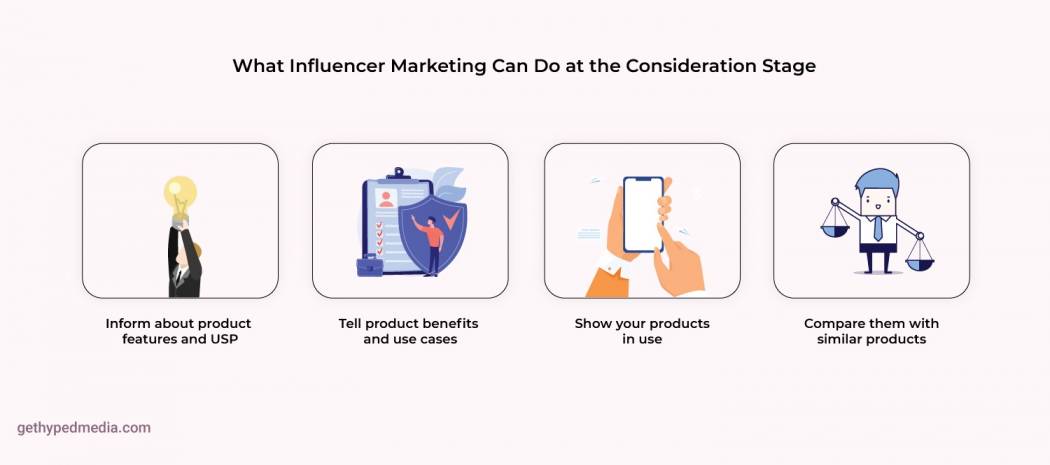
Make it clear why they should choose your product over other similar products.
How can you convince them of that?
Use the following influencer marketing strategies:
- Create an influencer marketing campaign with influencers showing your products in use.
- Ask influencers to create detailed tutorial videos and how-to content.
- Host influencer Q&A’s and events focused on your products.
- Run contests, quizzes, and giveaways in collaboration with influencers.
Here’s an example of an influencer’s post that not just mentions products, but shows them in use. This not only provides social proof but also lets prospective customers see how a product looks when in use.
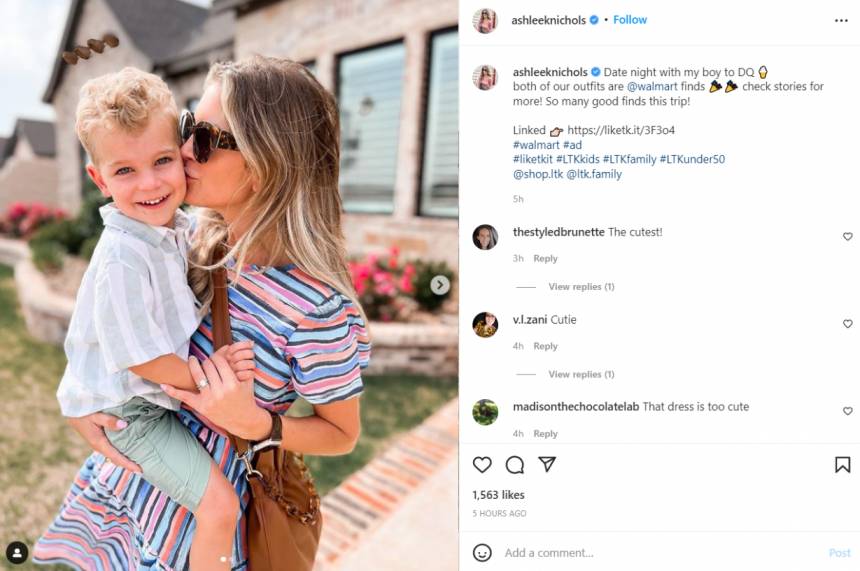
Image via Instagram
At this stage, you want to design your influencer marketing campaign in a way that engages your audience on multiple fronts.
Use Influencers at Stage 3 to Convert Leads to Customers
This is probably the most important stage in the customer journey as this is where your audience decides to either make a purchase or move on.
By now your prospects not only know about your products but are actively interested in them. Now, all you have to do is nudge them to make a purchase, and influencer marketing can help with that as well.
But first, let’s discuss the goals at this stage.
At this stage, you should design your influencer marketing campaign to:
- Drive leads to your primary selling location whether that’s your website or a big retailer like Amazon or Walmart
- Convert those leads into customers
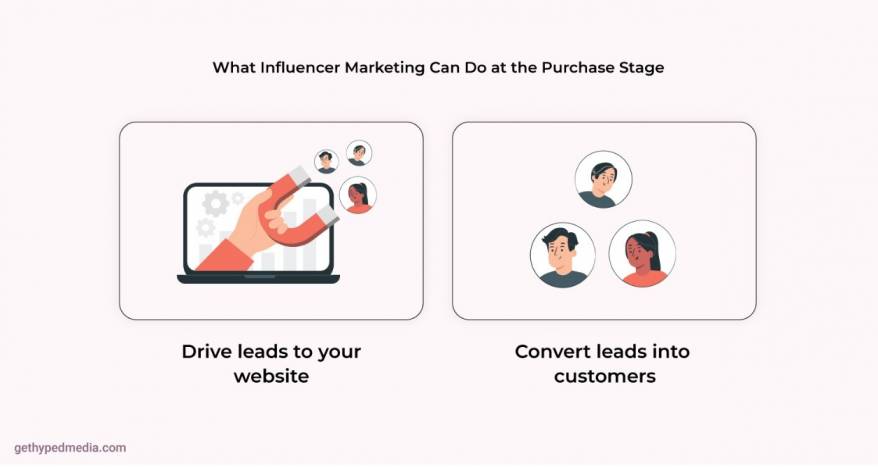
How can influencer marketing help with that?
Here’s how:
- Guide your influencers by requesting that they include a strong Call To Action (CTA) asking their audience to buy. Instagram Stories with “Swipe Up” CTAs and shoppable posts work really well at this stage of the customer journey.
- Provide influencers with unique discount codes to encourage their audience to make a purchase.
- Use influencer reviews and testimonials to provide social proof to your prospective customers.
- Promote your ongoing sales, offers, and discounts using influencer marketing.
At this stage of the customer journey, influencers drive sales.
However, a customer’s journey does not end here!
There’s another critical stage in your customer journey map that most brands miss—loyalty.
Let’s discuss how influencer marketing can help at this stage of the customer journey in the next section.
Use Influencer Marketing at Stage 4 to Retain Customers and Build Brand Loyalty and Advocacy
Once you’ve converted a lead into a customer, your next goal should be to focus on retaining that customer retention.
And of course, influencer marketing can help with that as well.
The goal at this stage is to:
- Encourage repeat purchases
- Build customer loyalty
- Keep existing customers engaged
- Turn loyal customers into brand advocates
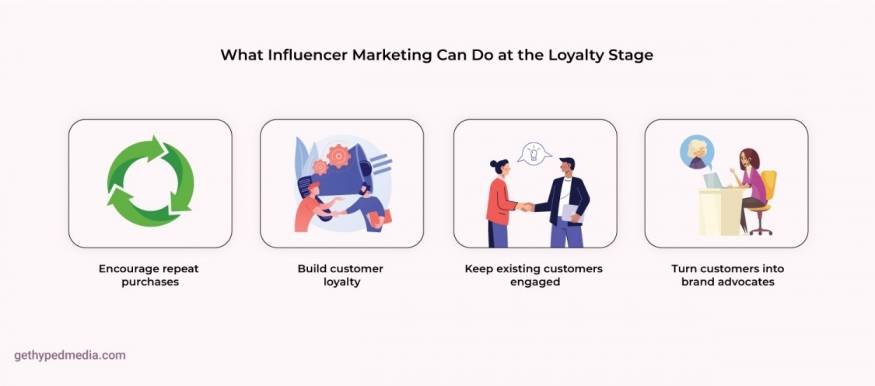
Here’s how influencer marketing can help with that:
- Have influencers continuously create engaging content for your audience over time. Social content can quickly go stale. When influencers post about your brand periodically it keeps your products top of mind for your customers.
- Ask influencers to create videos showing various use-cases of your products. This builds brand advocacy as customers learn new things about your brand and products.
- Hire influencers as your brand ambassadors and plan long-term partnerships with them. Building your influencers into ambassadors for your brand is the real secret sauce in influencer marketing. Developing partnerships with the right ambassadors is how the most successful brands obtain viral results from their influencer marketing campaigns.
Combine these influencer marketing strategies with a well-designed loyalty program to retain your customers. Then maintain those relationships as long as possible and you will organically turn them into your brand advocates.
FAQs
1. What are the stages of the customer journey?
Here are the four broad stages of the customer journey:
- Awareness – When a consumer first learns about your brand or products
- Consideration – When a prospect is actively interested and wants to learn more about your products
- Purchase – When a lead turns into a customer
- Loyalty – When a customer continues to buy and engage with your brand after making a purchase
2. Does influencer marketing help at each stage of the customer journey?
Yes, influencer marketing can be an effective tactic throughout the entire customer journey. You should adjust your campaign strategy depending on the stage of the customer journey that you’re targeting.
3. How to use influencer marketing at the awareness stage?
Use influencer marketing to reach your target market and create awareness using sponsored posts, brand mentions, and other types of influencer collaborations that introduce your brand and products.
4. Why should you use influencer marketing?
Influencer marketing is one of the most authentic and versatile marketing tactics that can help you meet all different types of goals. You can use influencer marketing tactics to engage prospective customers at all points in the buying process.
5. How can influencer marketing help drive more purchases?
You can collaborate with influencers to promote your ongoing offers and can even give them unique discount codes that they can offer to their audience. Including a strong Call To Action (CTA) in the influencer’s message is critical for driving conversions.
Ready to Use Influencer Marketing to Raise Awareness and Turn Leads into Customers?
As you know by now, influencer marketing is effective at every stage of the customer journey. And you can use it to drive your leads down your sales funnel.
Use this post as your guide on which influencer marketing strategies to use at each stage of your sales funnel and get great results from influencer marketing.
Need help with executing your next influencer marketing campaign? Our team at Get Hyped can help your team scale and design a high-impact campaign that delivers exponential results. Contact us.

